![]()
This is the Eduard, photo etch set for the ‘German Panzerkampfwagen IV, Ausf. F1/F2’ from Italeri.
Detail set |
Italeri |
||||
| (35 692) | Basic | ||||
Source: Eduard
This is the Italeri 6217 kit in 1/35 scale, of the ‘German Panzerkampfwagen IV, Ausf. F1/F2’.
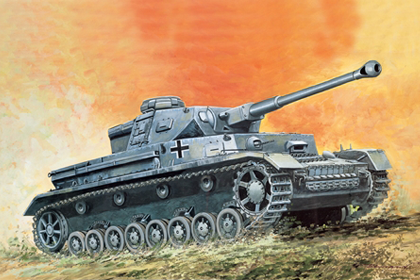
Given the shortcomings of the previous Panzer III, equipped with a 5 cm gun (often in difficulty against the Soviet T34 with its 5 cm gun and highly effective armour), it also featured enhanced protection.
The Mark IV was used extensively by the German Army on all fronts during the Second World War: numerous variants were produced to counter the constant improvements made to enemy tanks.
This is the Tamiya 35 093-1600 kit in 1/35 scale, of the ‘Russian Tank Destroyer, SU-122’.
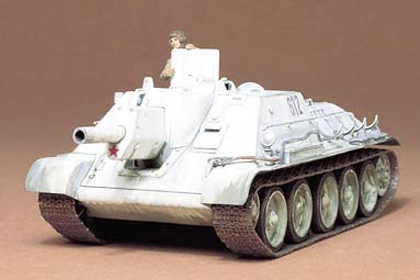
As Russian forces were forced to retreat from the relentless German blitzkrieg, large quantities of T34 and other tanks were produced in preparation of a counter attack. At the same time, Russian army urgently developed a new self-propelled gun, the SU-122. This tank featured a newly designed 122mm self-propelled howitzer and its production began in October 1942 at Tankograd in the Ural mountains. As the T34’s chassis and its mass production system was applied to SU-122, the first test models were amazingly completed with great speed taking approximately one month.
From there, the first lot of SU-122s were sent straight to the Leningrad front in January 1943. From July 1943, they saw action in the Battle of Kursk. The SU-122 with its 23 caliber 122mm howitzer fought with all its might against Panther and Tiger tanks and went on to superbly win a glorious victory. In following the success at Kursk, the SU-122 set the foundation on where other tanks such as the SU-85, SU-100, JSU-122, and JSU-152 were built upon.
This is the Dragon 6606 kit in 1/35 scale, of the ‘German Panzerkampfwagen III, Ausf. N, w/winterketten’.
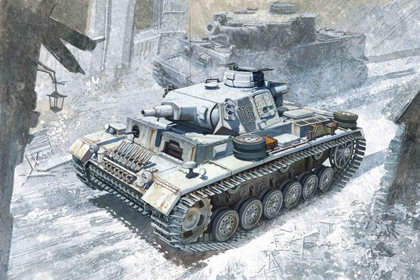
It was intended to fight other armoured fighting vehicles and serve alongside the infantry-supporting Panzer IV. However, as the Germans faced the formidable T-34, stronger anti-tank guns were needed. Since the Panzer IV had a bigger turret ring, the role was reversed. The Panzer IV mounted the long barreled 7.5 cm KwK 40 gun and engaged in tank-to-tank battles.
The Panzer III became obsolete in this role and for most purposes was supplanted by the Panzer IV. From 1942, the last version of Panzer III mounted the 7.5 cm KwK 37 L/24, better suited for infantry support. Production of the Panzer III ended in 1943. However, the Panzer III’s capable chassis provided hulls for the Sturmgeschütz III until the end of the war.
This is the Trumpeter 01523 kit in 1/35 scale, of the ‘German 2 cm Flakvierling 38 auf Selbstfahrlafette – Early version’.
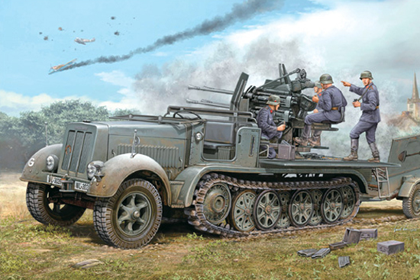
Starting in 1942, an armor radiator shield and crew cab were intriduced as protection against shell fragments and small arms fire. The first series of 100 were completed from April 1940 through mid-1941. Continuing at a low rate of 10 per month in early 1942, production accelerated in August 1942 to meet the incrersed theart of Allied air power. Altogether about 750 to 800 were produced by the end of December 1944.
This is the Trumpeter 00353 kit in 1/35 scale, of the ‘German Geschützwagen, 39H 10,5 cm LeFHI8’.
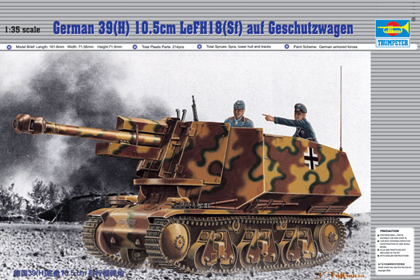
These vehicles mounted 10.5cm howitzers. Most of these conversions used the leFH 18 howitzer, but a few were converted using the leFH 16 howitzers.The only known surviving vehicle is located at the Saumur Museum in France.
This is the Trumpeter 00390 kit in 1/35 scale, of the ‘German Bruckenleger IV, Ausf. B’.
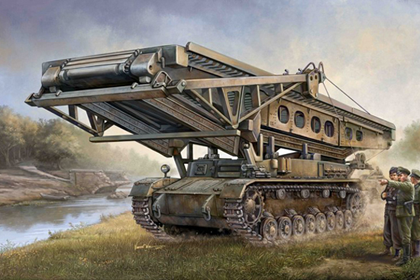
Nine-meter bridge had a 28-ton capacity. They saw service in Belgium and France in 1940 with 1st, 2nd, 3rd, 5th and 10th Panzer Division.
The vehicle was found to be too heavy for the suspension and the design was canceled in 1941. In late 1940, most were converted back to regular battle tanks. In January of 1941, Krupp completed 4 newer Bruckenleger IVc bridge layers. They saw service in 1941 in Russia with 3rd Panzer Division.
This is the Trumpeter 01524 kit in 1/35 scale, of the ‘German 2 cm Flakvierling 38 auf Selbstfahrlafette – Late version’.
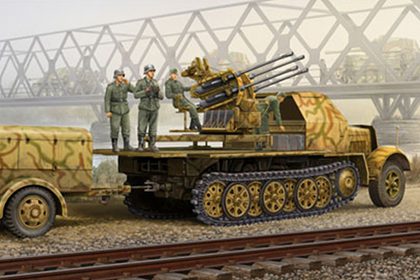
Starting in 1942, an armor radiator shield and crew cab were intriduced as protection against shell fragments and small arms fire. The first series of 100 were completed from April 1940 through mid-1941. Continuing at a low rate of 10 per month in early 1942, production accelerated in August 1942 to meet the incrersed theart of Allied air power. Altogether about 750 to 800 were produced by the end of December 1944.
This is the Trumpeter 02313 kit in 1/35 scale, of the ‘German 17 cm Kanone 18’.
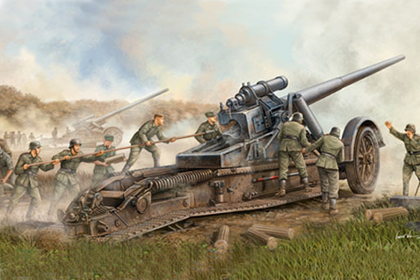
Although it was technically an excellent weapon, it was expensive, difficult to maneuver, very slow to set up and tear down; many were lost when their crew had either to abandon them or to risk capture by advancing allied troops.
This is the Tamiya 35 024 kit in 1/35 scale, of the ‘British Matilda MK.II’.
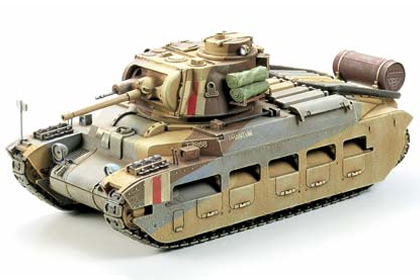
At the beginning of WWII in May 1940, the Matilda was deployed to France were it fought hard against the Rommel led German tank divisions which consisted of Panzer I, II, & III tanks. It was quickly discovered that the opposing Germans tanks could not penetrate the Matilda’s thick armor and relied on the anti-aircraft 88mm gun to knock them out.
1941 saw the Matilda again once more face off Rommel’s tank divisions, but this time in North Africa. It was here where it fought fierce battles against Panzer III and IV tanks and once more it was impenetrable. This war which raged for three years saw the 88mm anti-aircraft gun the only thing capable of knocking out the Matilda.
This is the Trumpeter 02314 kit in 1/35 scale, of the ‘German 21 cm Mörser 18’.
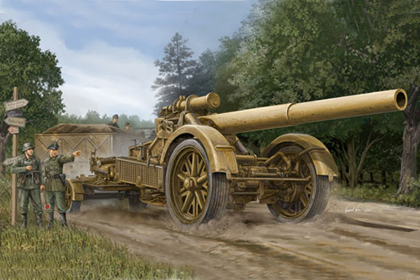
This carriage was also used for the 17 cm Kanone 18 in Mörserlafette and the 15 cm Schnelladekanone C/28 in Mörserlafette. The Mrs 18 was an enormous weapon that was transported in two pieces, as was common for such large weapons. For travel the barrel was slid on to a separate trailer. The carriage carried an integral firing platform that was lowered to the ground when emplacing the howitzer.
The wheels were then cranked up off the ground and it was now ready for firing. A rear castor-wheel jack was used to raise the rear spade off the ground if the gun needed to be traversed more than allowed by the 16° allowed by the mount proper.